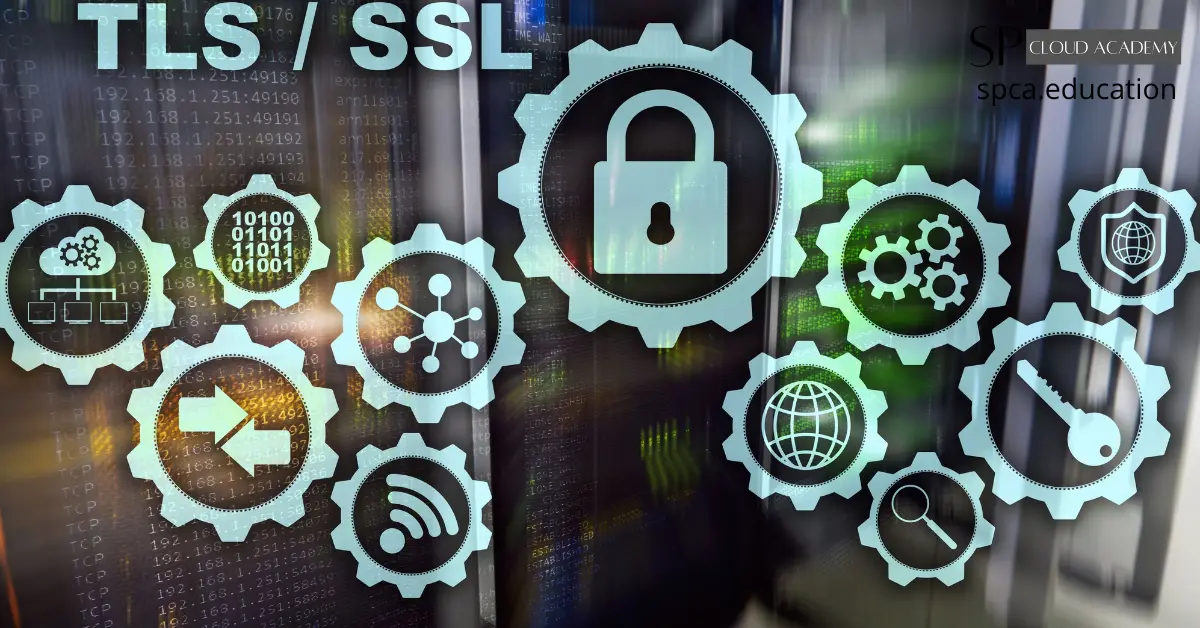Securing a website is crucial to protect sensitive information, maintain user trust, and prevent unauthorized access or attacks. Here are some essential steps you can take to enhance the security of your website:
- Use HTTPS: Implement HTTPS by obtaining an SSL/TLS certificate. This encrypts the data transmitted between the user’s browser and your web server, ensuring that sensitive information like login credentials and payment details remain secure.
- Keep Software Updated: Regularly update your website’s CMS (Content Management System), plugins, themes, and any other software components. Outdated software can have vulnerabilities that attackers can exploit.
- Strong Authentication: Enforce strong passwords for user accounts and implement multi-factor authentication (MFA) wherever possible. MFA adds an extra layer of security by requiring users to provide multiple forms of verification before accessing their accounts.
- Secure Hosting: Choose a reputable and secure web hosting provider. The hosting environment plays a significant role in the overall security of your website.
- Web Application Firewall (WAF): Set up a WAF to filter and monitor incoming traffic, blocking malicious requests and protecting against various types of attacks such as SQL injection, cross-site scripting (XSS), and more.
- Regular Backups: Perform regular backups of your website’s data and files. This ensures that you can quickly restore your website in case of data loss, hacking, or other unforeseen events.
- Implement Security Headers: Use HTTP security headers (e.g., Content Security Policy, X-XSS-Protection, X-Frame-Options) to provide an additional layer of protection against common web vulnerabilities.
- Secure Coding Practices: Follow secure coding practices to prevent common vulnerabilities. This includes validating and sanitizing user inputs, avoiding direct database queries (use prepared statements), and minimizing the use of third-party libraries with known vulnerabilities.
- Limit User Permissions: Only provide necessary permissions to users and administrators. Avoid giving unnecessary access that could potentially be exploited.
- Regular Security Audits and Testing: Conduct regular security audits and vulnerability assessments of your website. Perform penetration testing to identify potential weaknesses and address them promptly.
- Monitor and Log Activities: Implement monitoring and logging mechanisms to track and analyze user activities and potential security incidents. This can help detect and respond to threats in a timely manner.
- Educate Users: Provide security guidelines to your users, instructing them on how to create strong passwords, recognize phishing attempts, and use the website securely.
- Plan for Security Incidents: Develop an incident response plan to outline the steps to take in case of a security breach. This helps you respond effectively and minimize the impact of an attack.
- Regularly Review and Update Security Measures: The threat landscape is constantly evolving, so it’s essential to stay updated on the latest security practices and adapt your security measures accordingly.
Remember that no security measure can provide 100% protection, but by implementing a combination of these practices, you can significantly enhance the security of your website and reduce the risk of breaches.
SSL/TLS certificate
An SSL (Secure Sockets Layer) or TLS (Transport Layer Security) certificate is a digital certificate that establishes a secure encrypted connection between a user’s web browser and a web server. It ensures that the data transmitted between the two parties remains private, secure, and tamper-proof. Here’s an overview of SSL/TLS certificates and their importance:
- Encryption: SSL/TLS certificates use encryption algorithms to encrypt data transmitted between a user’s device and the web server. This prevents unauthorized parties from intercepting and deciphering the data, making it unreadable to anyone who might try to capture it.
- Data Integrity: SSL/TLS certificates also ensure data integrity. This means that the data exchanged between the user and the server cannot be altered or tampered with during transmission without detection.
- Authentication: SSL/TLS certificates include information about the website’s owner, which is verified by a trusted Certificate Authority (CA). This authentication process assures users that they are connecting to the legitimate website and not a malicious imposter.
- Trust and User Confidence: When a website has an SSL/TLS certificate, it is indicated by a padlock icon in the browser’s address bar and the URL starts with “https://” instead of “http://”. This visual confirmation of security helps build trust with users, assuring them that their information is safe.
- Search Engine Ranking: Search engines, like Google, consider HTTPS (secured by SSL/TLS) as a ranking factor. Websites with SSL/TLS certificates tend to rank higher in search results.
- Types of Certificates: There are different types of SSL/TLS certificates, including:
- Domain Validated (DV) Certificates: These verify the ownership of the domain and are typically used for basic encryption.
- Organization Validated (OV) Certificates: These provide more extensive validation of the organization’s details along with encryption.
- Extended Validation (EV) Certificates: These involve a more rigorous validation process and provide the highest level of trust, often displayed with a green address bar.
- Wildcard Certificates: These cover a domain and its subdomains, allowing secure connections for multiple subdomains with a single certificate.
- Multi-Domain (SAN) Certificates: These cover multiple domains and subdomains within a single certificate.
- Certificate Lifespan: Certificates have a validity period, usually ranging from one to three years. It’s important to renew certificates before they expire to maintain secure connections.
- Certificate Authorities (CAs): CAs are organizations that issue SSL/TLS certificates after verifying the identity of the certificate requester. Well-known CAs include DigiCert, Comodo, Let’s Encrypt, and GlobalSign.
In summary, an SSL/TLS certificate is a crucial component of website security that ensures data privacy, integrity, and authentication, enhancing user trust and overall website security.
How to obtain SSL/TLS certificate
Obtaining an SSL/TLS certificate involves a few steps, which may vary depending on your specific situation and the Certificate Authority (CA) you choose. Here’s a general guide on how to obtain an SSL/TLS certificate:
- Choose a Certificate Authority (CA):
Select a reputable CA to obtain your SSL/TLS certificate. Some popular CAs include DigiCert, Comodo, GlobalSign, and Let’s Encrypt (which offers free certificates). Different CAs offer various types of certificates, features, and pricing options. - Generate a Certificate Signing Request (CSR):
A CSR is a file generated on your web server that contains your public key and information about your organization. The CSR is used by the CA to create your SSL/TLS certificate. Most web server software provides tools to generate a CSR. You’ll need to provide details like your domain name, organization information, and location. - Submit the CSR to the CA:
Once you have the CSR, submit it to the chosen CA during the certificate application process. You’ll need to follow the CA’s instructions for submitting the CSR. This might involve creating an account with the CA and providing additional verification information. - Complete Domain Validation:
The CA will typically require you to prove ownership of the domain for which you’re requesting the certificate. This can involve various methods, such as responding to emails sent to domain-specific addresses, adding specific DNS records, or uploading a verification file to your website. - Verify Organization (if applicable):
For Organization Validated (OV) and Extended Validation (EV) certificates, you might need to provide additional documentation to verify your organization’s identity. This can include legal documents, business licenses, or other official records. - Receive and Install the Certificate:
Once the CA approves your request, they will issue the SSL/TLS certificate. You’ll receive the certificate files, usually in a ZIP archive, via email or through your CA account. The files typically include the SSL/TLS certificate itself, an intermediate certificate, and sometimes a root certificate. - Install the Certificate on Your Server:
Log in to your web server and follow the instructions provided by your server software or hosting provider to install the SSL/TLS certificate. You’ll need to upload the certificate files and configure your server to use the certificate for secure connections. - Test the Certificate Installation:
After installing the certificate, test your website to ensure that secure connections are working properly. You can use online SSL checker tools to verify your SSL/TLS installation and configuration. - Set Up Automatic Renewal:
SSL/TLS certificates have expiration dates. To ensure continuous security, set up automatic renewal or reminders to renew the certificate before it expires.
Additionally, some hosting platforms, like cPanel or Plesk, have built-in tools for obtaining and installing SSL/TLS certificates, making the process more user-friendly. If you’re not comfortable with the technical aspects, you might consider seeking assistance from your hosting provider or a technical expert.
Securing Hosting
Securing your hosting environment is essential to ensure the overall security and reliability of your website. Here’s a detailed guide on securing your hosting:
Choose a Secure Hosting Provider:
- Select a reputable hosting provider known for their focus on security.
- Look for providers that offer features like firewalls, intrusion detection systems, and regular security audits.
Keep Software Updated:
- Regularly update your server’s operating system, web server software (e.g., Apache, Nginx), and other components.
- Enable automatic updates whenever possible.
Implement Strong Authentication:
- Use strong, unique passwords for server and control panel access.
- Implement two-factor authentication (2FA) for an added layer of security.
Firewall Protection:
- Configure a web application firewall (WAF) to filter incoming traffic and block malicious requests.
- Consider using a network firewall to restrict access to specific IP addresses.
SSH Security:
- Disable root login via SSH and use a non-standard port for SSH access.
- Implement SSH key-based authentication for enhanced security.
Secure File Transfer:
- Use SFTP (SSH File Transfer Protocol) or SCP (Secure Copy) for secure file transfers.
- Avoid using unencrypted protocols like FTP.
Regular Backups:
- Set up automated and regular backups of your website and database.
- Store backups in a secure offsite location.
Malware Scanning and Removal:
- Utilize tools or services that regularly scan for malware and vulnerabilities.
- If malware is detected, take immediate action to remove it.
Access Control:
- Limit access to your server through strong firewall rules and IP whitelisting.
- Use Role-Based Access Control (RBAC) to restrict user permissions.
Monitor Server Logs:
- Regularly review server logs for any unusual activities or suspicious entries.
- Implement log monitoring tools to alert you to potential security breaches.
SSL/TLS Encryption:
- Enable SSL/TLS encryption for secure data transmission between users and your server.
- Ensure valid SSL/TLS certificates are installed and properly configured.
Database Security:
- Regularly update your database software and apply security patches.
- Implement strong access controls and use secure authentication methods.
Secure Coding Practices:
- Follow secure coding practices for your website’s applications and scripts to prevent vulnerabilities like SQL injection and cross-site scripting (XSS).
Regular Security Audits and Penetration Testing:
- Conduct regular security audits to identify vulnerabilities and weaknesses.
- Perform penetration testing to simulate real-world attacks and address potential risks.
DDoS Protection:
- Choose a hosting provider that offers DDoS protection services to mitigate large-scale attacks.
Physical Security:
- If you have physical access to the server, ensure it’s stored in a secure and controlled environment.
Incident Response Plan:
- Develop a comprehensive incident response plan to handle security breaches effectively.
- Know how to isolate compromised systems, notify users, and recover data.
User Education:
- Educate your team about security best practices, including password management and social engineering awareness.
Compliance and Regulations:
- If applicable, ensure your hosting environment meets industry-specific compliance standards and regulations.
Remember that security is an ongoing process. Regularly review and update your security measures to stay ahead of emerging threats and vulnerabilities.
See Also
- https://spca.education/wordpress-site-administration-and-maintenance/
- https://spca.education/build-up-a-fast-and-powerful-website/
- Free Educational Web Portal Framework – SP Cloud Academy (spca.education)
- https://en.wikipedia.org/wiki/Certificate_authority
-

Plesk vs. cPanel: Which One Really Wins for Web Hosting in 2025?
-

Mastering Website Performance: The Complete Guide to Google Search Console & Analytics
-

The Only Step-by-Step Guide You Need to Install & Configure cPanel on an Ubuntu VPS
-

WordPress on Subdomain vs. Subfolder: Pros, Cons & Best Choice Explained
-

Step-by-Step: Creating and Revoking Temporary WordPress Access
-

The Ultimate Cloud Hosting Handbook: Every Feature, Benefit, and Pitfall Explained
